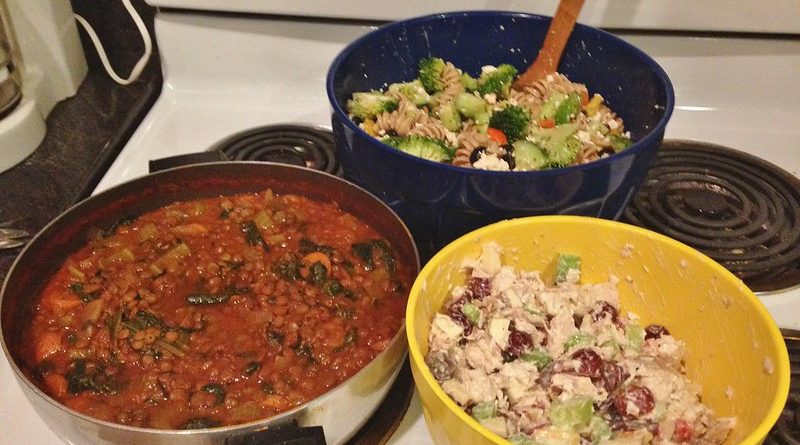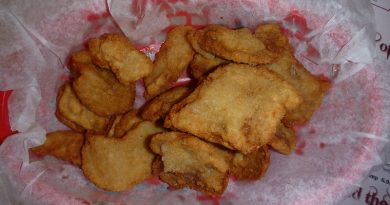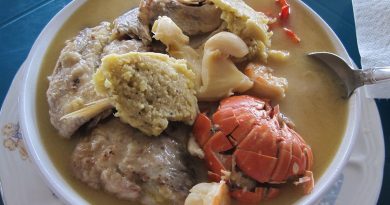The Food of Greece
Greek cuisine is known for lots of olive oil, feta cheese, fresh vegetables and nuts. Dishes vary according to the local specialities. For example, mountainous areas are popular for their meat dishes, while in the islands cuisine is largely based on a variety of fresh fish. Grilled meat and fish, oily oven baked dishes like stuffed vegetables and Moussaka (layered potato, vegetables and mince) and of course the infamous Greek Salad. Other rich salads and dips like tzatziki and taramosalata can be found in every restaurant or taverna.
Food is a very important and highly valued element of Greek culture and rich dinners are a must and the most important meal of the day. Oranges, lemons and olives are grown in abundance and feature in many dishes.
In some ways, the Greeks have similar habits to the English, so when dining out expect chips with just about everything unless you request otherwise. Be sure to try the many types of seafood on offer in the Islands and around the coast. For a tasty snack, why not try a cheese pie or for the sweet toothed, baklava, a layered pastry cake?
Regional nuances
Crete
Cretan food is known as some of the healthiest in the world. This is according to numerous studies, especially conducted after the difficult WWII years, when many islanders survived largely on a diet of foraged mountain greens, and what little else they could procure. These greens, known as horta (horta is a common dish throughout Greece, varying by region depending on the greens that grow wild), have become synonymous with good health and the famed longevity of the Cretan people.
The great deal of gentle sunshine, combined with plentiful rainfall in Fall and Winter, makes for an excellent climate under which Mediterranean staples such as olives, grapes, fruit, beans, legumes, and a plethora of vegetables grow. This is in addition to a seemingly endless list of fragrant wild herbs and greens which are collected and used in pies, or braised in a variety of satisfying dishes.
The food is flavorful and nourishing. It is comprised mainly of plant based foods that are grown locally (or as locally as possible), and often without the use of pesticides.
Fresh seafood abounds in the coastal areas, and locals know how to prepare it perfectly (often grilled simply with olive oil and lemon). Inland, goat or rabbit may be stewed in a succulent stifado, or grilled with olive oil, lemon and herbs. Locally produced honey is prized and delicious, and pairs well with artisan cheeses or in a sweet flaky filo pie. Savory filo pies, filled with vegetables, cheese, or wild greens and herbs (hortopita) are also very popular.
The local cheeses – either fresh or aged, and most often made from goat or sheep milk – are excellent.
Study Guide: The Story of Cheese – Top Greek Cheeses
A notable item on the Cretan menu is daxos – hard rusks are softened with juicy ripe tomatoes, luscious olive oil, a sprinkling of herbs, and creamy myzithra cheese.
Wine making is an ancient tradition in Crete, and has been an integral part of the social tradition (and diet) for centuries – since Minoan times. Today, Cretan wines are becoming increasing recognized for their surprising quality and sophisticated profiles. Wine routes have been established around Heraklion, and elsewhere on the island, and local winemakers are working hard to perpetuate this centuries old tradition and to improve the quality of their wines.
Ionian Islands
The Ionian islands and Corfu in particular have always been an important staging post for travels between East and West, and have inherited a mixture of culinary characteristics from its conquerors and passers by.
The Ionian islands are known for their abundance of fish and similarities in cooking to Adriatic and Mediterranean dishes. Two fish dishes you will find on the menus of the Ionians (includung Corfu) include Savoro, an Escabeche by another name; and a Bourdeto, which is a firm fish cooked in tomato sauce, onion, garlic and spicy red peppers. Bourdeto takes its name from the Venetian word Brodeto, meaning broth.
Due to their strategic position in the Adriatic Sea, the Ionian Islands were a much sought after overseas possession of the Republic of Venice from the mid-14th century until the late 18th century.
The Dodecanese
Dodecanese cooking is slightly different to other island cooking as it relies more heavily on spice, in particular, pepper.
Rhodes, the largest of the Dodecanese, has multiple foreign influences running through it’s gastronomic veins, owing to its past invaders including the Persians, the Roman Empire and Byzantium, the Umayyad, the Crusaders and the Ottomans!
An example dish would be Karavoloi giachnisti — snails cooked in a pot with onion, olive oil, tomato, pepper, bay and cumin.







